Abstract
Modest increases in intracellular calcium concentrations, in association with ATP depletion, cause the appearance of pathologic changes in erthrocyte shape and deformability. The loss of erythrocyte ATP and simultaneous increase in cellular calcium have previously been considered the sole requisites for the appearance of erythrocyte membrane rigidity. We report that red cells suspended in high-potassium buffers may be simultaneously loaded with calcium (through exposure to the divalent cation ionophore A23187) and depleted of ATP without incurring drastic changes in shape or in membrane stiffness. Incubation of erythrocytes under these conditions effectively blocks both water and potassium loss normally caused by calcium accumulation. However, the high external potassium has no influence on either the ionophore-induced accumulation of calcium or on the the concomitant hydrolysis of cellular ATP. These results suggest the involvement of at least one further parameter, ie, changes in cell water and cation content, in the development of calcium-induced erythrocyte rigidity.
Full text
PDF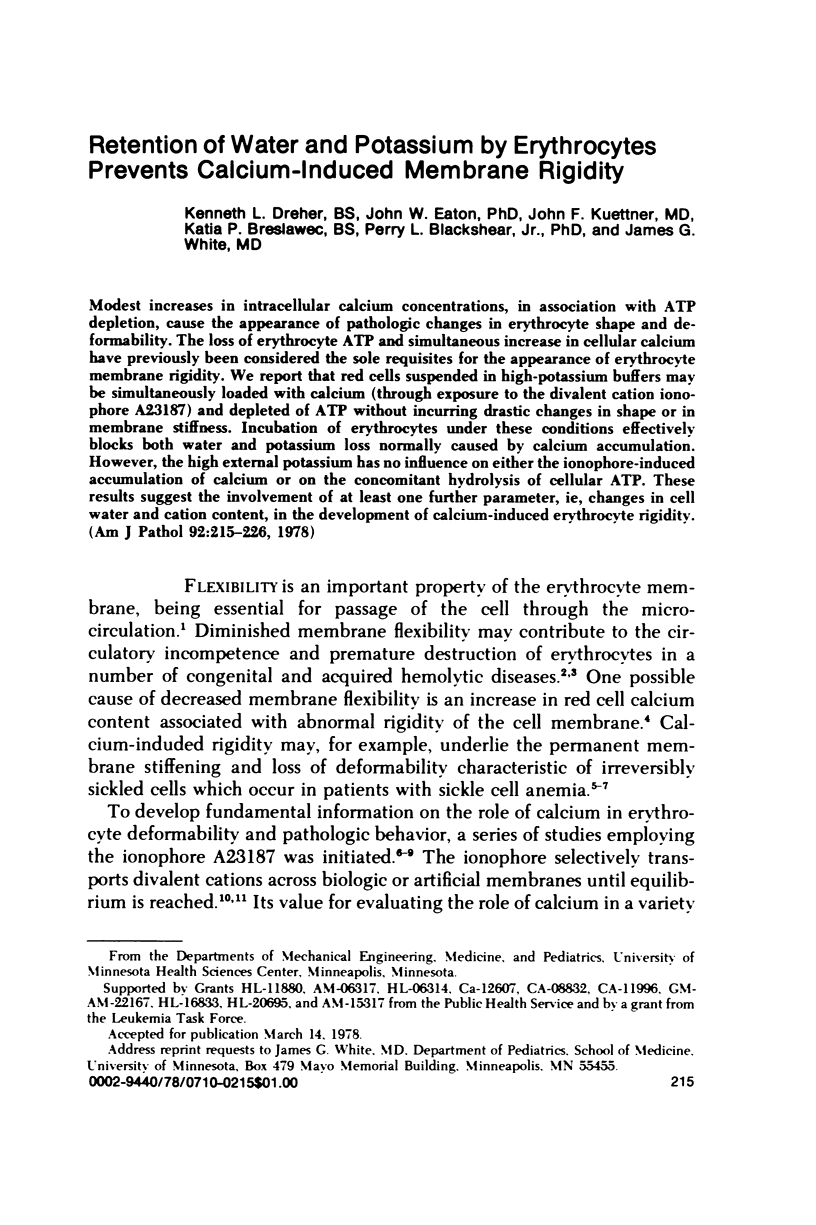
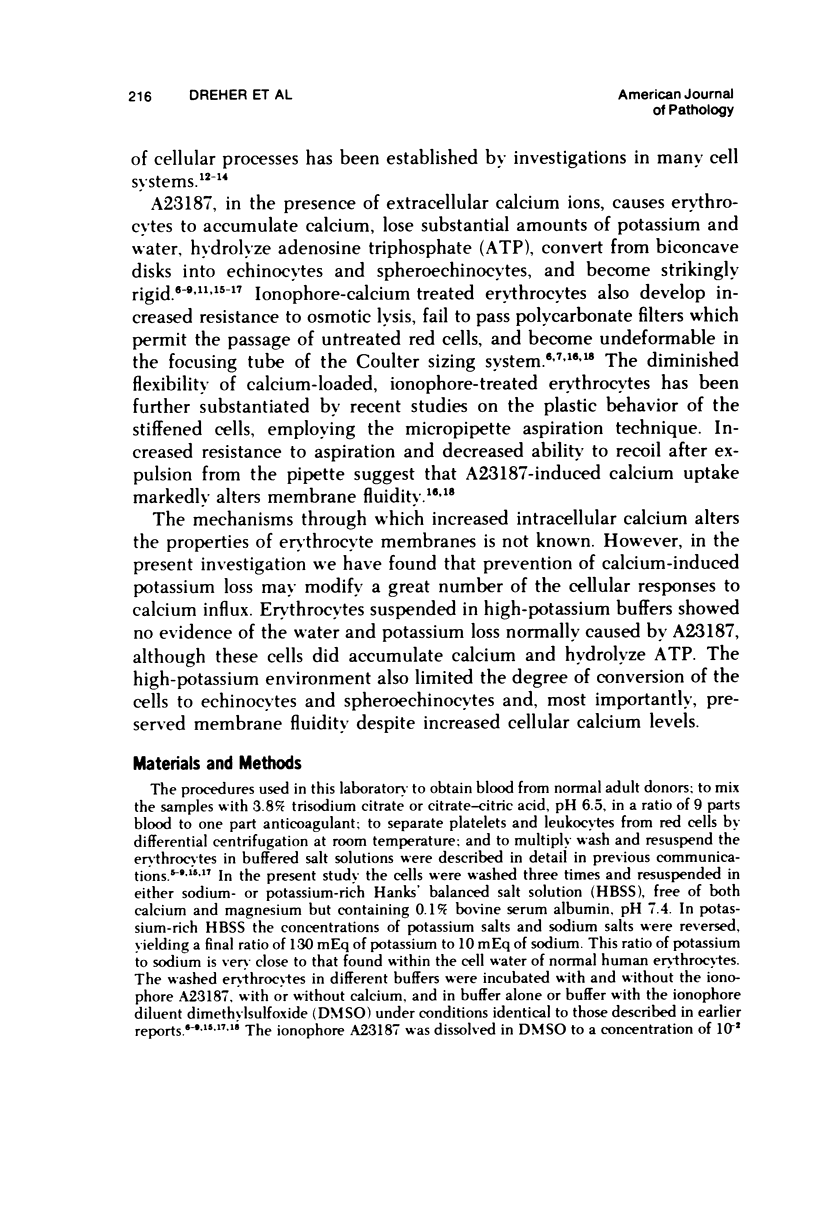
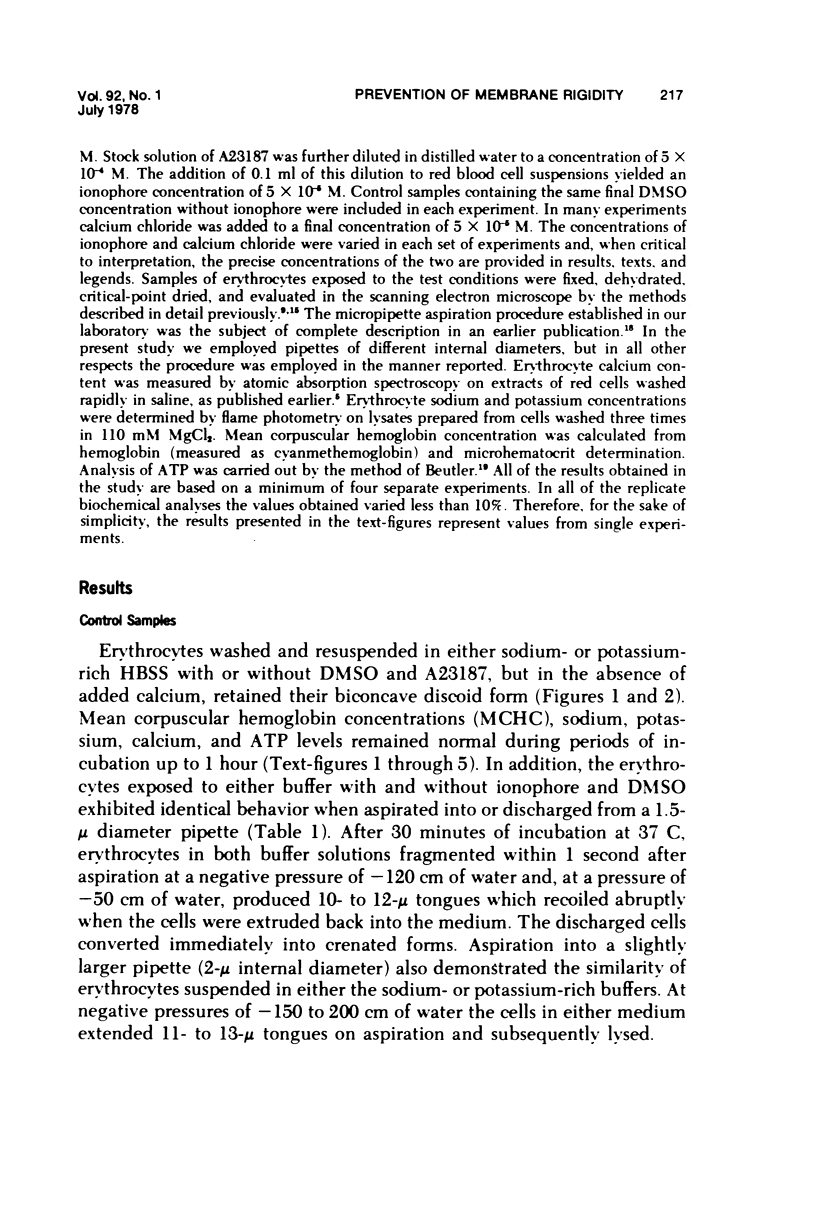
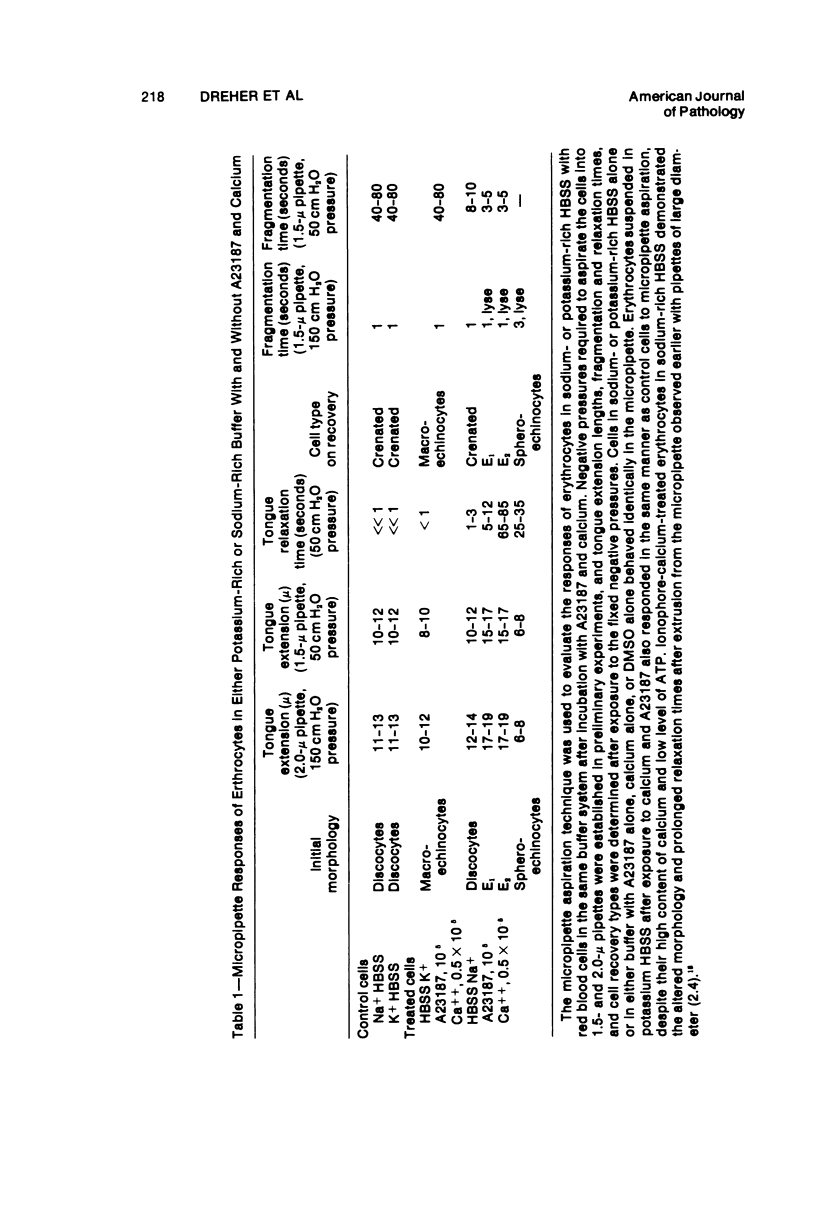
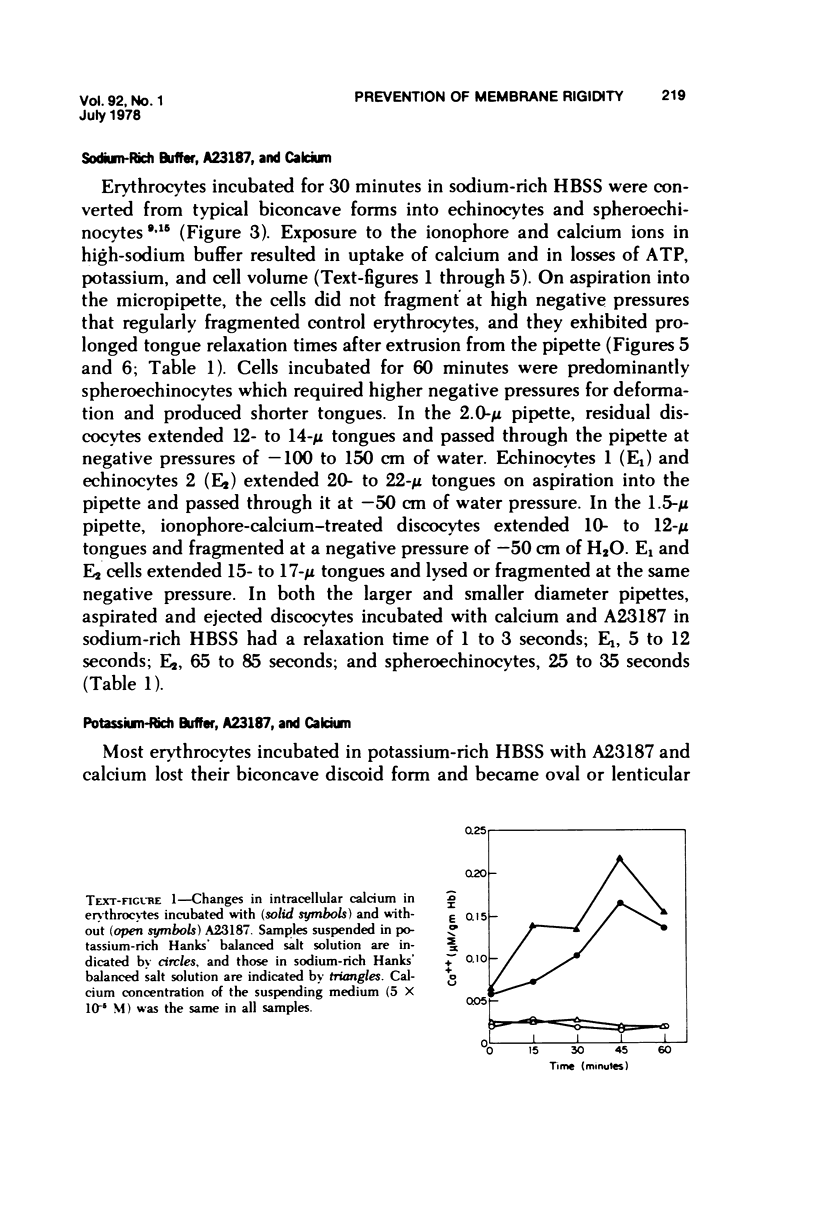
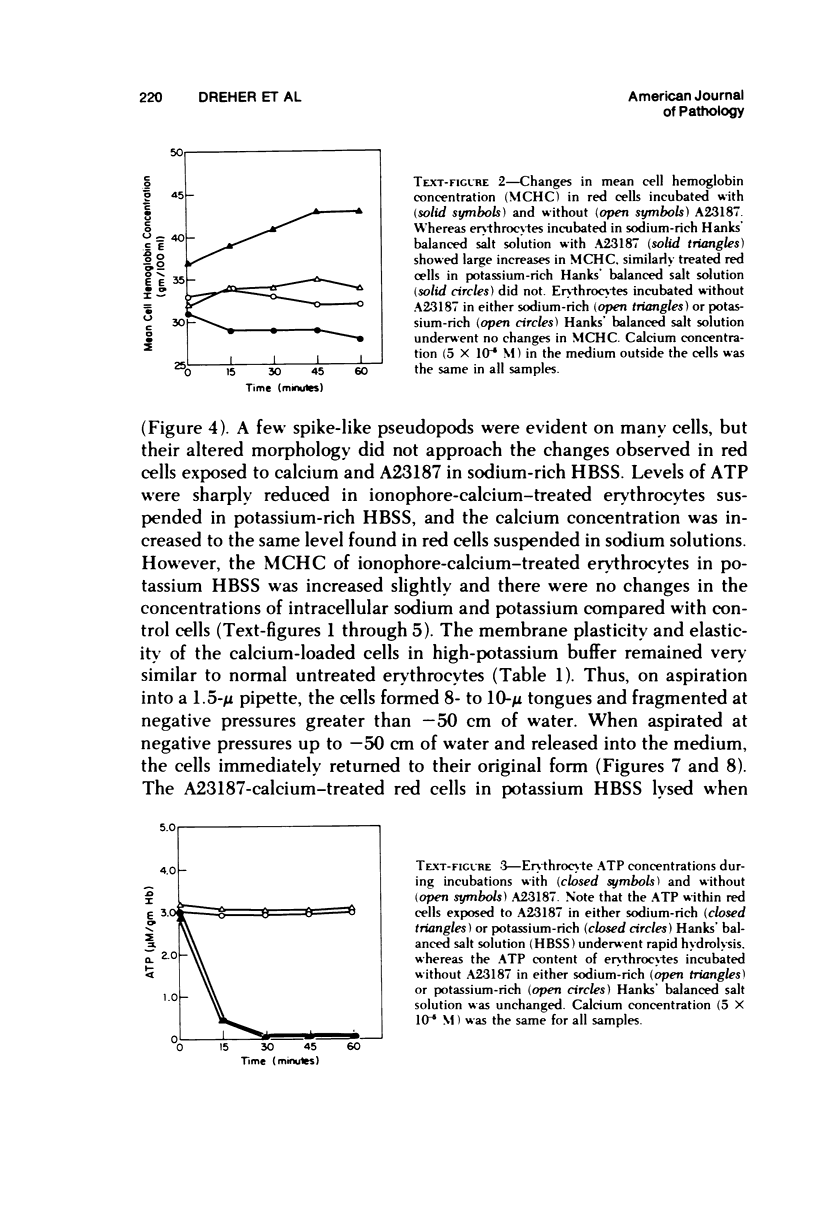
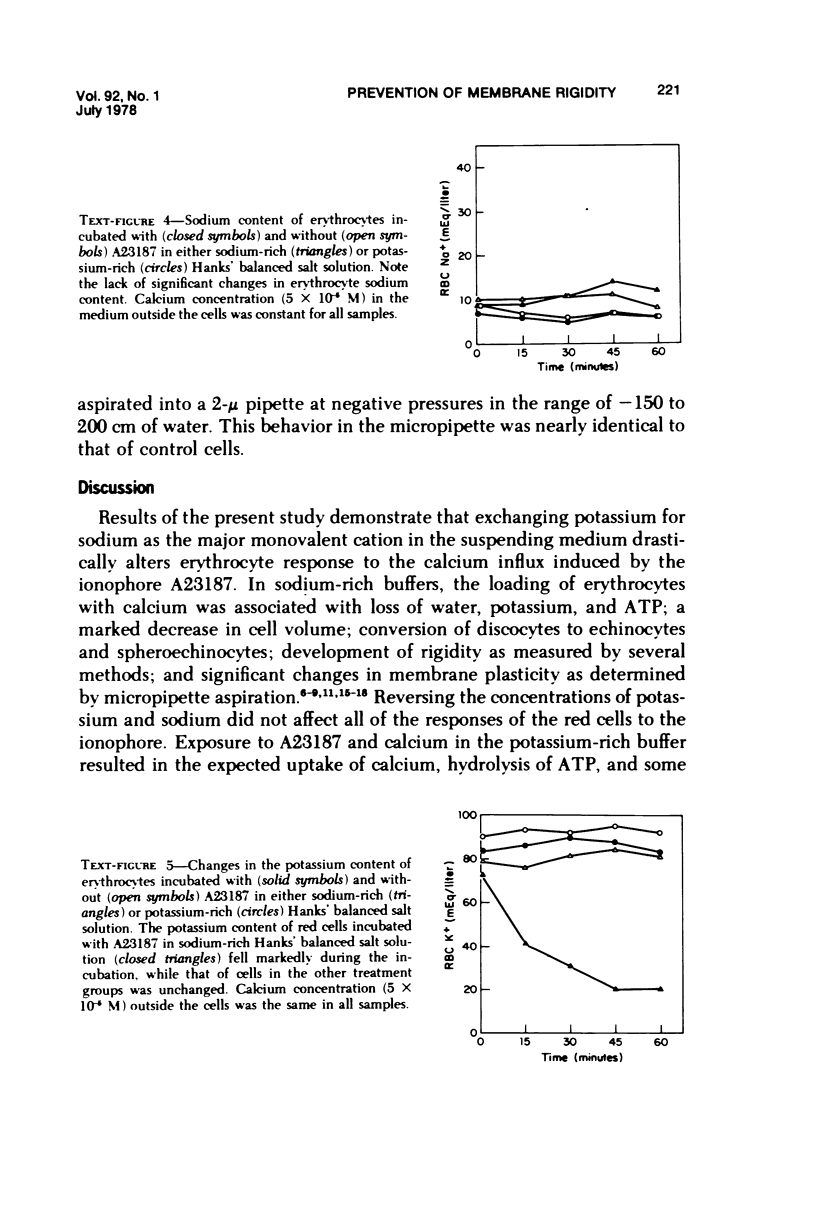
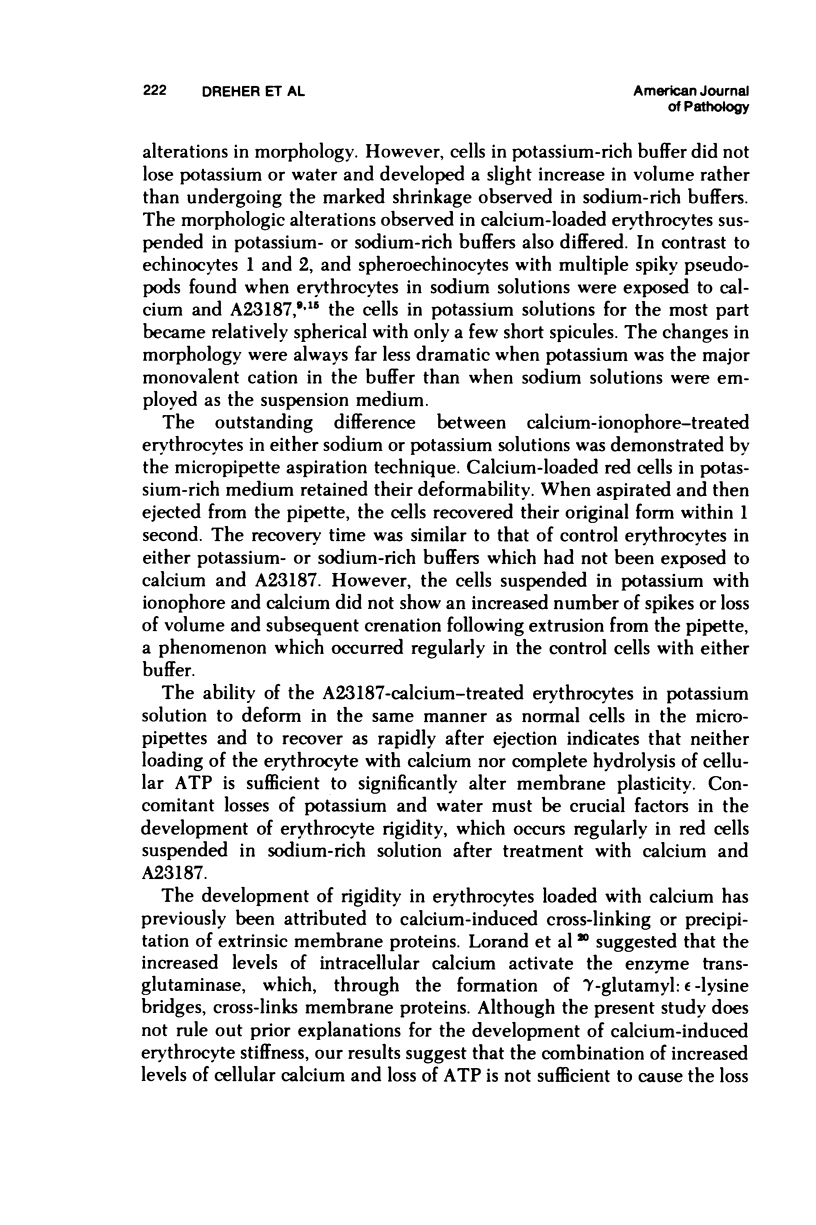
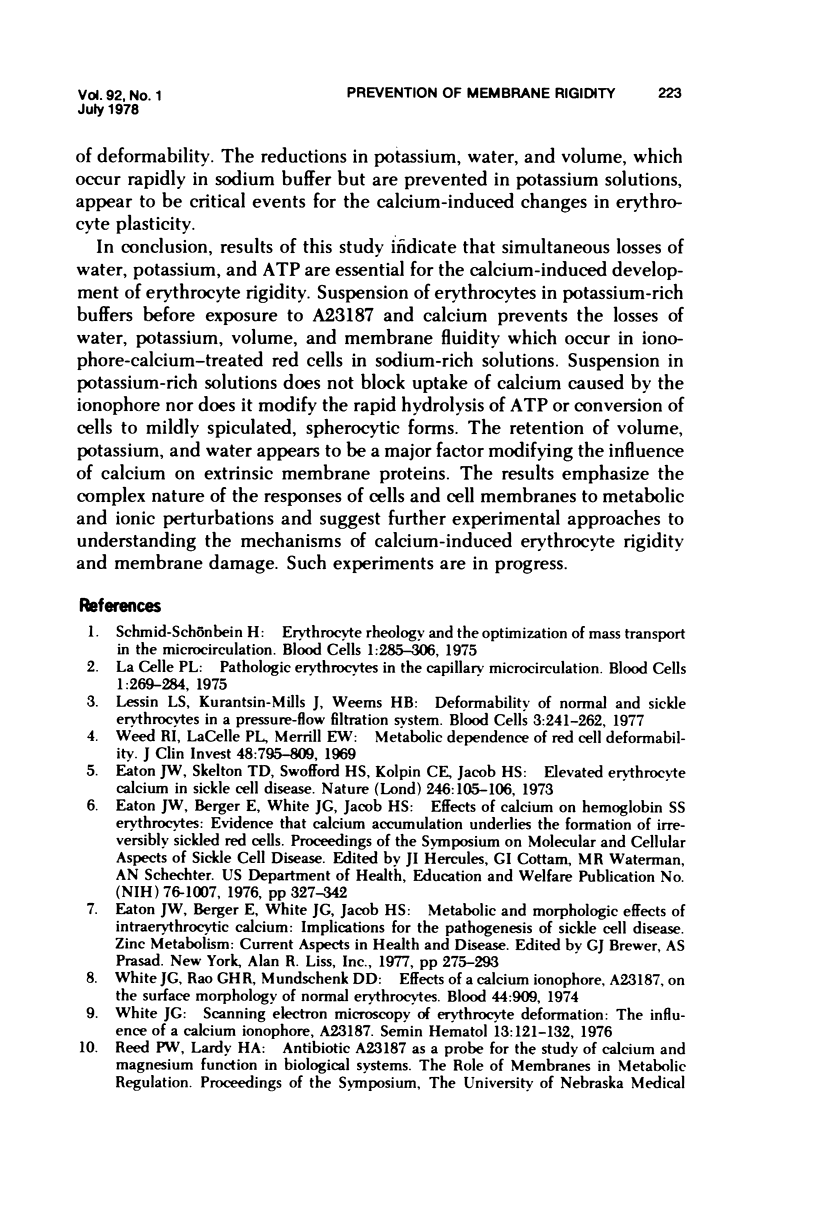
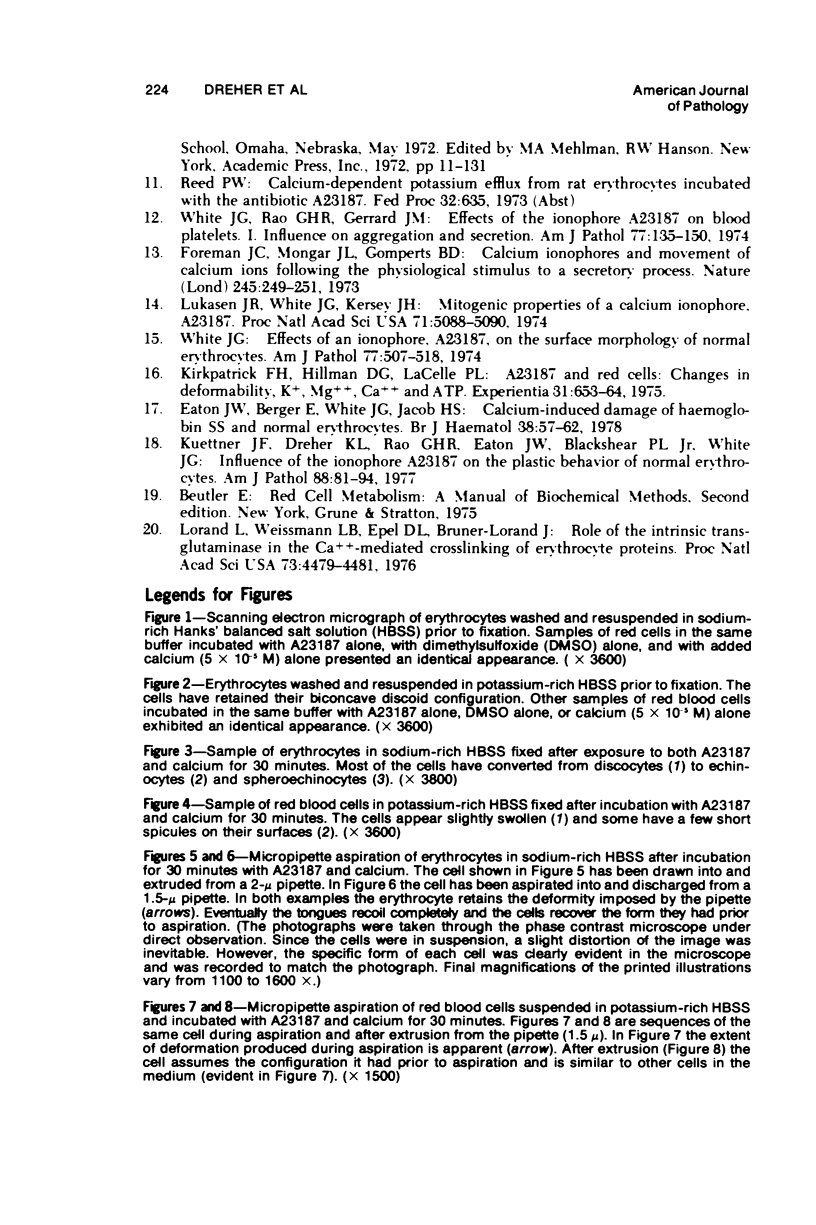
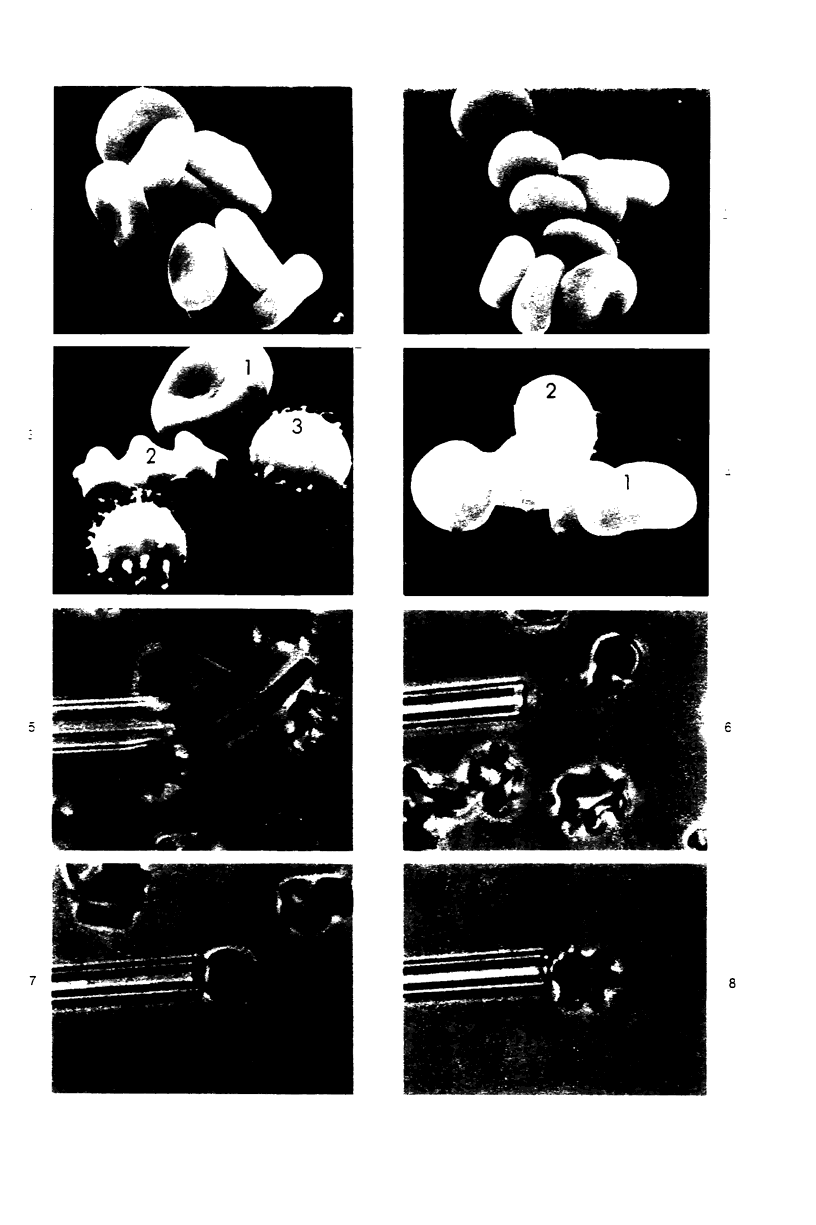
Images in this article
Selected References
These references are in PubMed. This may not be the complete list of references from this article.
- Eaton J. W., Berger E., White J. G., Jacob H. S. Calcium-induced damage of haemoglobin SS and normal erythrocytes. Br J Haematol. 1978 Jan;38(1):57–62. doi: 10.1111/j.1365-2141.1978.tb07108.x. [DOI] [PubMed] [Google Scholar]
- Eaton J. W., Berger E., White J. G., Jacob H. S. Metabolic and morphologic effects of intraerythrocytic calcium: implications for the pathogenesis of sickel cell disease. Prog Clin Biol Res. 1977;14:275–298. [PubMed] [Google Scholar]
- Eaton J. W., Skelton T. D., Swofford H. S., Kolpin C. E., Jacob H. S. Elevated erythrocyte calcium in sickle cell disease. Nature. 1973 Nov 9;246(5428):105–106. doi: 10.1038/246105a0. [DOI] [PubMed] [Google Scholar]
- Foreman J. C., Mongar J. L., Gomperts B. D. Calcium ionophores and movement of calcium ions following the physiological stimulus to a secretory process. Nature. 1973 Oct 5;245(5423):249–251. doi: 10.1038/245249a0. [DOI] [PubMed] [Google Scholar]
- Kirkpatrick F. H., Hillman D. G., La Celle P. L. A23187 and red cells: changes in deformability, K+, Mg-2+, Ca-2+ and ATP. Experientia. 1975 Jun 15;31(6):653–654. doi: 10.1007/BF01944610. [DOI] [PubMed] [Google Scholar]
- Kuettner J. F., Dreher K. L., Rao G. H., Eaton J. W., Blackshear P. L., Jr, White J. G. Influence of the ionophore A23187 on the plastic behavior of normal erythrocytes. Am J Pathol. 1977 Jul;88(1):81–94. [PMC free article] [PubMed] [Google Scholar]
- Lorand L., Weissmann L. B., Epel D. L., Bruner-Lorand J. Role of the intrinsic transglutaminase in the Ca2+-mediated crosslinking of erythrocyte proteins. Proc Natl Acad Sci U S A. 1976 Dec;73(12):4479–4481. doi: 10.1073/pnas.73.12.4479. [DOI] [PMC free article] [PubMed] [Google Scholar]
- Luckasen J. R., White J. G., Kersey J. H. Mitogenic properties of a calcium ionophore, A23187. Proc Natl Acad Sci U S A. 1974 Dec;71(12):5088–5090. doi: 10.1073/pnas.71.12.5088. [DOI] [PMC free article] [PubMed] [Google Scholar]
- Weed R. I., LaCelle P. L., Merrill E. W. Metabolic dependence of red cell deformability. J Clin Invest. 1969 May;48(5):795–809. doi: 10.1172/JCI106038. [DOI] [PMC free article] [PubMed] [Google Scholar]
- White J. G. Effects of an ionophore, A23187, on the surface morphology of normal erythrocytes. Am J Pathol. 1974 Dec;77(3):507–518. [PMC free article] [PubMed] [Google Scholar]
- White J. G. Scanning electron microscopy of erythrocyte deformation: the influence of a calcium ionophore, A23187. Semin Hematol. 1976 Apr;13(2):121–132. [PubMed] [Google Scholar]








